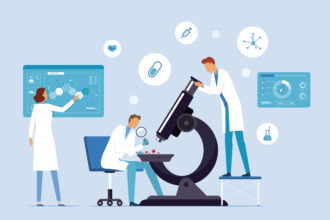I am quoted in a couple of year-end / new year pieces on health IT, appearing this week in i
I am quoted in a couple of year-end / new year pieces on health IT, appearing this week in iHealthBeat and FierceHealthIT.
With new developments over the past year in the realms of telehealth, mobile health and health data privacy and security, and opportunities for accountable care organizations, integration of connected health and implementation of HIPAA compliance plans, there is plenty of material for prognosticators.
Kate Ackerman, Editor-in-Chief at iHealthBeat asked 13 experts three questions.
Here are the questions and my answers; follow the link above to read 12 other perspectives.
What was the most significant health IT development over the past year?
The release of the HIPAA Omnibus Rule. The rule affects all sectors of the health IT ecosystem — providers, vendors, analytics, research, marketing, developers and, of course, patients. The newly firmed-up right to patient-directed flow of information (“zap me my entire medical record now, please”) and the data segmentation that patients are permitted to require (“don’t send this information to my insurance company”) pose significant implementation challenges for some — both technical and cultural.
What was the biggest disappointment or missed opportunity in the health IT space in 2013?
The fact that Direct is not being used more widely in order to make patient portals less vendor-specific and more patient-centric. Providers should see that openness as a benefit to patients and as something patients would be grateful to have. By making information more open, providers may be able to command greater patient loyalty than by keeping information bottled up.
Looking forward to 2014, what are the biggest remaining barriers to widespread adoption and meaningful use of health IT? And, what can be done to help address those challenges?
Are we talking about meaningful use as defined by the HITECH Act and related regulations, or about “true” meaningful use? The two are not necessarily the same thing. If the former, the barriers are the technical and cost barriers which may be somewhat ameliorated by the longer lead time recently afforded Stage 3. (To a certain extent, there is continued generational resistance at the private practice level, and there isn’t much one can do about that.)
If the latter, then the barriers are the standards and measures that create the check-the-box approach to health systems improvement and health status improvement that are not necessarily optimized to create the health care system of the future or the best outcomes for the most patients. True meaningful use requires higher levels of patient engagement than are required by the regulations in order to enable health care providers to help patients help themselves (ourselves!) make better lifestyle choices (diet, exercise, etc.) that are the key determinants of health status. Much of chronic disease is preventable, and chronic disease care accounts for a disproportionate share of our health care spend. Care for injuries and acute disease may be optimized through population-based analysis of EHR data.
In short, I believe that health IT can be a significant force in improving preventive care, personalized medicine and population health; we just have to get out of our own way in order to make it work.







